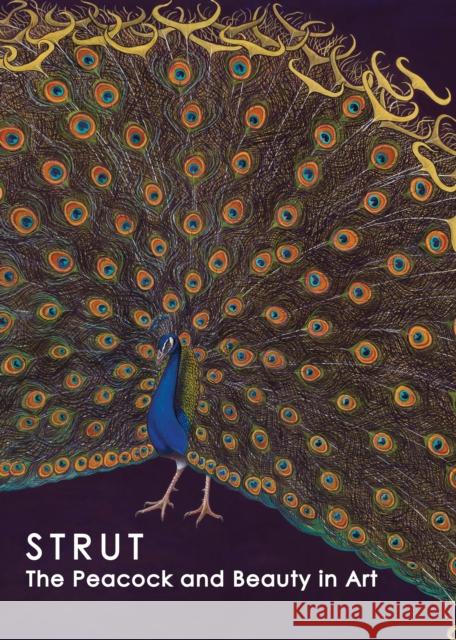Strut: The Peacock and Beauty in Art » książka
topmenu
Strut: The Peacock and Beauty in Art
ISBN-13: 9780943651453 / Angielski / Miękka / 2014 / 200 str.
Experience the glamour of shades of sapphire-blue and emerald-green through a highly illustrated book that studies the symbolic nature of the peacock through the lens of art.
Strut: The Peacock and Beauty in Art explores our fascination with that most glamorous of birds. The peacock, strutting in its sapphire-blue and emerald-green plumage, symbolizes all things vain and beautiful in centuries of painting and sculpture, in books, and on clothes that swirl and shine like the iridescent bird itself. Intrigued by the exotic art of Asia that prized and portrayed the peacock and its trail of an emblazoned train of feathers, Western artists in the 1890s chose the bird as a symbol of design on their canvases and for objects in the home. Though striking Gilded Age peacock imagery escalated in fin-de-siecle French Art Nouveau and the Art Deco of the Roaring Twenties, the Great Depression of 1929 quelled the idea of beauty for its own sake; art now needed to be more than beautiful it should serve, first, the social good. While in the aftermath of the Depression and a world war Americans of the '50s looked, again, for luxury, modernism gave rise to the ethos "Less is more." The peacock's profile changed once more, this time into a symbol of drama and decadence. Today, as the contemporary art world renews its embrace of visual beauty, the peacock in form, color, and association resurges. The first major scholarly examination of the peacock in visual arts in the United States, England, and France, from the nineteenth century's Gilded Age to today, Strut, organized by the Hudson River Museum, has assembled paintings and decorative arts from museums and private collections throughout the United States. Contributing essays to the catalog Strut: The Peacock and Beauty in Art by Bartholomew F. Bland; Penelope Fritzer; Kirsten M. Jensen; Melissa J. Martens; Ellen E. Roberts; and Laura L. Vookles.










